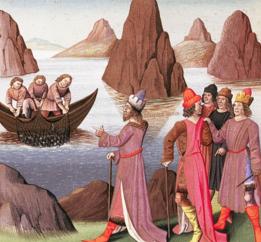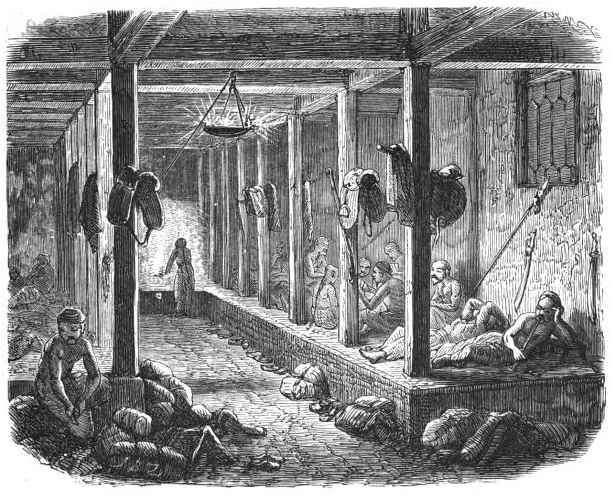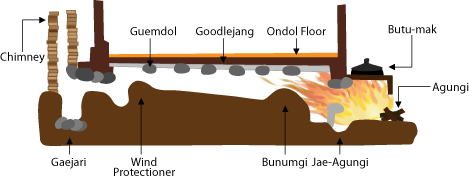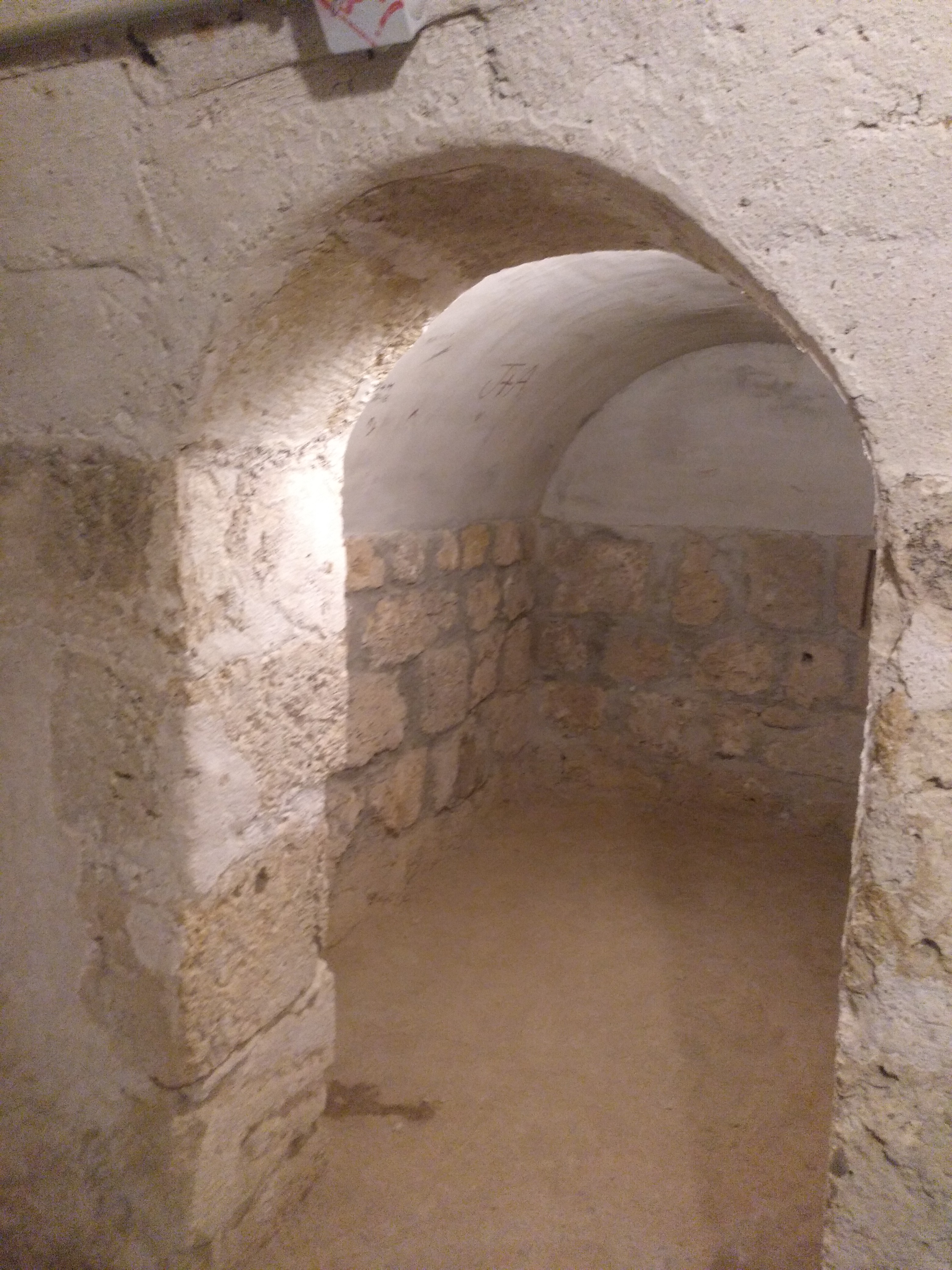|
Hypocaust
A hypocaust () is a system of central heating in a building that produces and circulates hot air below the floor of a room, and may also warm the walls with a series of pipes through which the hot air passes. This air can warm the upper floors as well. The word derives from Ancient Greek ''hupó'' and ''kaustós'' (compare '' caustic''). The earliest reference to such a system suggests that the Temple of Ephesus in 350 BC was heated in this manner, although Vitruvius attributes its invention to Sergius Orata in c. 80 BC. Its invention improved the hygiene and living conditions of citizens, and was a forerunner of modern central heating. Roman operation Hypocausts were used for heating hot baths and other public buildings in ancient Rome. They were also used in private homes. It was considered proper and necessary by the wealthier merchant class for their villas, throughout the Roman Empire. The ruins of Roman hypocausts have been found throughout Europe (for example in It ... [...More Info...] [...Related Items...] OR: [Wikipedia] [Google] [Baidu] |
Sergius Orata
Gaius Sergius Orata (Floruit, fl. c. 95 BC) was an Ancient Roman who was a successful merchant, inventor and hydraulic engineer. He is credited with inventing the Oyster farming, cultivation of oysters and refinement to the hypocaust method of heating a building to provide, in addition, heated water for bathing. Origins of his name The writer Sextus Pompeius Festus, Festus noted "The Gilt-head bream, Orata", the gilt headed bream, "is a kind of fish so called for its golden color (''aurata'', "golden," also spelled ''orata'')." ... "Because of this, it's said about the very wealthy Sergius that they called him ''orata'', because he wore two big rings of gold. Some authorities assert that his nickname just comes from the commercialization of those fishes." Biography Sergius was well known to his contemporaries for the breeding and commercialization of oysters, of which he was a noted innovator. Orata wanted to take advantage of the wealthy Romans' liking for shellfish as food, s ... [...More Info...] [...Related Items...] OR: [Wikipedia] [Google] [Baidu] |
Kang Bed-stove
The ''kang'' (; Manchu: ''nahan'', ) is a traditional heated platform, 2 metres or more long, used for general living, working, entertaining and sleeping in the northern part of China, where the winter climate is cold. It is made of bricks or other forms of fired clay and more recently of concrete in some locations. The word ''kang'' means "to dry". Its interior cavity, leading to an often-convoluted flue system, channels the hot exhaust from a firewood/coal fireplace, usually the cooking fire from an adjacent room that serves as a kitchen, sometimes from a stove set below floor level. This allows a longer contact time between the exhaust (which still contains much heat from the combustion source) and (indirectly) the inside of the room, hence more heat transfer/recycling back into the room, effectively making it a ducted heating system similar to the Roman hypocaust. A separate stove may be used to control the amount of smoke circulating through the ''kang'', maintaining comfo ... [...More Info...] [...Related Items...] OR: [Wikipedia] [Google] [Baidu] |
Ondol
(; , ; ) or ''gudeul'' (; ) in Korean traditional architecture is underfloor heating that uses direct heat transfer from wood smoke to heat the underside of a thick masonry floor. In modern usage, it refers to any type of underfloor heating, or to a hotel or a sleeping room in Korean (as opposed to Western) style. The main components of the traditional ondol are an '' agungi'' (; ), a '' firebox'' or '' stove'', accessible from an adjoining room (typically kitchen or master bedroom), a raised masonry floor underlain by horizontal smoke passages, and a vertical, freestanding chimney on the opposite exterior wall providing a draft. The heated floor, supported by stone piers or baffles to distribute the smoke, is covered by stone slabs, clay and an impervious layer such as oiled paper. History Origin Use of the has been found at archaeological sites in present-day North Korea. A Neolithic Age archaeological site, ''circa'' 5000 BC, discovered in Sonbong, Rason, in present-day ... [...More Info...] [...Related Items...] OR: [Wikipedia] [Google] [Baidu] |
Central Heating System
A central heating system provides warmth to a number of spaces within a building from one main source of heat. A central heating system has a Furnace (central heating), furnace that converts fuel or electricity to heat through processes. The heat is circulated through the building either by fans forcing heated air through Duct (flow), ducts, circulation of low-pressure steam to Radiator, radiators in each heated room, or Pump, pumps that circulate hot water through room radiators. Primary energy sources may be fuels like coal or wood, oil, kerosene, natural gas, or electricity. Compared with systems such as Fireplace, fireplaces and Wood-burning stove, wood stoves, a central heating plant offers improved uniformity of temperature control over a building, usually including automatic control of the furnace. Large homes or buildings may be divided into individually controllable zones with their own Temperature control, temperature controls. Automatic fuel (and sometimes ash) handli ... [...More Info...] [...Related Items...] OR: [Wikipedia] [Google] [Baidu] |
De Architectura
(''On architecture'', published as ''Ten Books on Architecture'') is a treatise on architecture written by the Ancient Rome, Roman architect and military engineer Vitruvius, Marcus Vitruvius Pollio and dedicated to his patron, the emperor Caesar Augustus, as a guide for Caesar Augustus#Building projects, building projects. As the only treatise on architecture to survive from antiquity, it has been regarded since the Renaissance as the first known book on architectural theory, as well as a major source on the canon of classical architecture. It contains a variety of information on Greek and Roman buildings, as well as prescriptions for the planning and design of military camps, cities, and structures both large (aqueducts, buildings, baths, harbours) and small (machines, measuring devices, instruments). Since Vitruvius wrote early in the Roman architectural revolution that saw the full development of cross vaulting, domes, Roman concrete, concrete, and other innovations associa ... [...More Info...] [...Related Items...] OR: [Wikipedia] [Google] [Baidu] |
Central Heating
A central heating system provides warmth to a number of spaces within a building from one main source of heat. A central heating system has a Furnace (central heating), furnace that converts fuel or electricity to heat through processes. The heat is circulated through the building either by fans forcing heated air through Duct (flow), ducts, circulation of low-pressure steam to Radiator, radiators in each heated room, or Pump, pumps that circulate hot water through room radiators. Primary energy sources may be fuels like coal or wood, oil, kerosene, natural gas, or electricity. Compared with systems such as Fireplace, fireplaces and Wood-burning stove, wood stoves, a central heating plant offers improved uniformity of temperature control over a building, usually including automatic control of the furnace. Large homes or buildings may be divided into individually controllable zones with their own Temperature control, temperature controls. Automatic fuel (and sometimes ash) handli ... [...More Info...] [...Related Items...] OR: [Wikipedia] [Google] [Baidu] |
Hammam
A hammam (), also often called a Turkish bath by Westerners, is a type of steam bath or a place of public bathing associated with the Islamic world. It is a prominent feature in the culture of the Muslim world and was inherited from the model of the Roman '' thermae.'' Muslim bathhouses or hammams were historically found across the Middle East, North Africa, al-Andalus (Islamic Iberia, i.e. Spain and Portugal), Central Asia, the Indian subcontinent, and in Southeastern Europe under Ottoman rule. In Islamic cultures the significance of the hammam was both religious and civic: it provided for the needs of ritual ablutions but also provided for general hygiene in an era before private plumbing and served other social functions such as offering a gendered meeting place for men and for women. Archeological remains attest to the existence of bathhouses in the Islamic world as early as the Umayyad period (7th–8th centuries) and their importance has persisted up to modern tim ... [...More Info...] [...Related Items...] OR: [Wikipedia] [Google] [Baidu] |
Vitruvius
Vitruvius ( ; ; –70 BC – after ) was a Roman architect and engineer during the 1st century BC, known for his multi-volume work titled . As the only treatise on architecture to survive from antiquity, it has been regarded since the Renaissance as the first book on architectural theory, as well as a major source on the canon of classical architecture. It is not clear to what extent his contemporaries regarded his book as original or important. He states that all buildings should have three attributes: , , and ("strength", "utility", and "beauty"), principles reflected in much Ancient Roman architecture. His discussion of perfect proportion in architecture and the human body led to the famous Renaissance drawing of the ''Vitruvian Man'' by Leonardo da Vinci. Little is known about Vitruvius' life, but by his own descriptionDe Arch. Book 1, preface. section 2. he served as an artilleryman, the third class of arms in the Roman military offices. He probably served as a senior of ... [...More Info...] [...Related Items...] OR: [Wikipedia] [Google] [Baidu] |
Gloria (heating System)
Gloria (meaning ''glory'' in Spanish) is a central heating system used in Castile, beginning in the Middle Ages. It is a direct descendant of the Roman hypocaust, and its feature of regulating the rate of combustion allows people to use smaller, cheaper materials for fuel, such as leaves, hay, or twigs, instead of wood. Description The gloria consists of a firebox, generally located outside (in a courtyard, for example), which burns the fuel, and one or more ducts which run under the floors of the rooms to be heated. The warm exhaust gases from the combustion pass through these ducts and then are released outside through a vertical flue. Historically, glorias used pine needles for fuel and pine cones for kindling, in both cases using what would otherwise be waste material, saving firewood for cooking and smithing, as well as hay and silage for animal fodder. The rate of combustion (and therefore the heat output) can be regulated by restricting the airflow into the firebox. M ... [...More Info...] [...Related Items...] OR: [Wikipedia] [Google] [Baidu] |
Al Andalus
Al-Andalus () was the Muslim-ruled area of the Iberian Peninsula. The name refers to the different Muslim states that controlled these territories at various times between 711 and 1492. At its greatest geographical extent, it occupied most of the peninsula as well as Septimania under Umayyad rule. These boundaries changed through a series of conquests Western historiography has traditionally characterized as the ''Reconquista'',"Para los autores árabes medievales, el término Al-Andalus designa la totalidad de las zonas conquistadas – siquiera temporalmente – por tropas arabo-musulmanas en territorios actualmente pertenecientes a Portugal, España y Francia" ("For medieval Arab authors, Al-Andalus designated all the conquered areas – even temporarily – by Arab-Muslim troops in territories now belonging to Spain, Portugal and France"), García de Cortázar, José Ángel. ''V Semana de Estudios Medievales: Nájera, 1 al 5 de agosto de 1994'', Gobier ... [...More Info...] [...Related Items...] OR: [Wikipedia] [Google] [Baidu] |
Iberian Peninsula
The Iberian Peninsula ( ), also known as Iberia, is a peninsula in south-western Europe. Mostly separated from the rest of the European landmass by the Pyrenees, it includes the territories of peninsular Spain and Continental Portugal, comprising most of the region, as well as the tiny adjuncts of Andorra, Gibraltar, and, pursuant to the traditional definition of the Pyrenees as the peninsula's northeastern boundary, a small part of France. With an area of approximately , and a population of roughly 53 million, it is the second-largest European peninsula by area, after the Scandinavian Peninsula. Etymology The Iberian Peninsula has always been associated with the River Ebro (Ibēros in ancient Greek and Ibērus or Hibērus in Latin). The association was so well known it was hardly necessary to state; for example, Ibēria was the country "this side of the Ibērus" in Strabo. Pliny the Elder, Pliny goes so far as to assert that the Greeks had called "the whole of the peninsula" Hi ... [...More Info...] [...Related Items...] OR: [Wikipedia] [Google] [Baidu] |
Calefactory
The calefactory (also ''warming house'') was an important room or building in a medieval monastery in Western Europe. In the present day it is a communal place of recreation and fellowship in religious houses such as monasteries, priories, and convents. Monasteries in the Medieval and Middle Ages In this period the calefactory had a communal fire kept ablaze so that the monks could warm themselves after long hours of study in the (unheated) cloister or other work. In the early Middle Ages, this was one of the few heated rooms in the monastery – the others being the infirmary, the guest house and the kitchen. This policy was generally relaxed, save for a few very strict orders, by the latter part of the medieval period when fireplaces became common throughout the claustral buildings. The warming house was always one of the buildings surrounding the cloister and was entered from it. It was often located close to the refectory so that the warmth could be shared by the monks ... [...More Info...] [...Related Items...] OR: [Wikipedia] [Google] [Baidu] |






